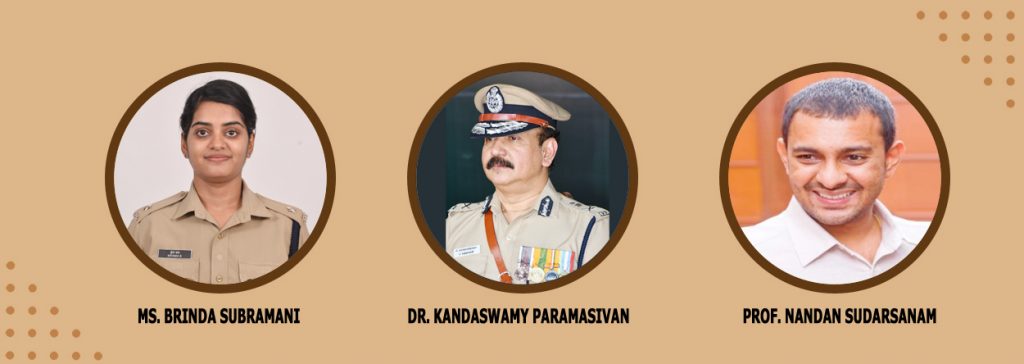
Of all the crimes that happen in a society, missing person cases are unique in the sense that they are more complicated than property crimes and violent crimes. These cases are a challenge to the police because of the emotional grief of the kith and kin, and the nature of disappearances. Also, tracing and locating missing persons is more difficult for the police in terms of effort, resources, time, and strain involved as compared to other crimes.
The question to be asked here is, why do people go missing? The following are probable reasons:
1. Unintentional: People in large gatherings such as festivals which include children and elderly people who get separated from their families, and kidnappings could be one of the causes for people to go missing.
2. Intentional: In this case, the people leave voluntarily for personal and domestic reasons such as elopement or academic failure. Forced arranged marriages are a major cause for people to run away and elope. Recently, academic failure has turned out to be a major reason for people running away due to peer pressure and societal expectations.
Other causes involving people who go missing due to intentional reasons include those running away to escape abuse from a care home or an assisted living facility. This is a common category of missing persons in India.
Bankruptcy and suicide are other examples and forms of intentional absence.
3. Involuntary: This type of missing people is influenced by a third person or party such as immoral trafficking, possible abduction, or kidnapping. This category involves people missing against their will and includes cases of missing women.
4. The last category involves people missing due to mental illness or injury.
In pre-pandemic times, missing person cases were registered by the police by the kith and kin of the absentees. However, during the pandemic, and especially during the complete lockdown, the situation became more difficult. Law enforcement authorities were preoccupied with pandemic related work besides their regular assignments. Thus there was a decline in the number of missing person registered cases.

In this study conducted by Dr. Kandaswamy Paramasivan, IPS., from the Directorate of Vigilance and Anti-corruption, Government of Tamil Nadu, Chennai, India, , Ms Brinda Subramani, IPS., Assistant Superintendent of Police, Pollachi Coimbatore, Tamil Nadu Police Department, India, and Prof. Nandan Sudarsanam from the Department of Management Studies, Indian Institute of Technology (IIT) Madras, Chennai, India, who is also from the Robert Bosch Centre for Data Science and AI, Indian Institute of Technology (IIT) Madras, Chennai, India, for the first time, to the best of the authors’ knowledge, auto- regressive neural network (ARNN) studies were done to find out more regarding missing person cases in 2020 and 2021 during the pandemic and complete lockdown.
Auto-regressive neural network (ARNN) is an improvement of the auto-regressive integrated moving average (ARIMA) technique usually undertaken by practitioners and researchers in criminal justice administration, police science, criminology, and related fields. This is a descriptive statistical tool and a conventional forecasting method which has been improved by implementing deep learning techniques.
This neural network method that has been deployed in this study has several advantages such as its accuracy in prediction, its capability to work with sparse data with missing values, and its ability to predict even with little past data as it learns from other similar time series. While conventional statistical methods have been generally reliable and consistent for decades, when presented with irregular and rapidly changing data, the models become unstable and fail. Moreover, when holidays and seasonal patterns change, conventional models are inaccurate. Deep Learning models show better prediction accuracy and are more reliable.
The results of this study showed that because of mass migration and lack of public transport there were higher number of missing person cases. The daily count of the mean number of missing person cases rose by 61 percent, that is, from 32 in the pre-pandemic period (January 1st, 2020 to March 22nd, 2020) to 55 in the pandemic years (March 23rd, 2020 to December 31st, 2021).The daily count of the mode number of cases during the corresponding periods was 18 and 63 respectively, thus highlighting the huge upsurge of cases.
This study also showed that during the complete lockdown, there was a decline of 74 percent and 36 percent of missing person cases in the actual case when compared with the counterfactual, during the first and second waves, respectively. There was a corresponding escalation of 35 percent and 40 percent in the post-lockdown phases.
Through this study, it was concluded that better physical access for complainants, adequate relief centres, and involvement of stakeholders is a must to promptly locate missing people.
Dr. A. Amalraj, IPS., Commissioner of Police, Tambaram Police Commissionerate, Sholinganallur, Chennai, explained in detail the problems faced by the police in solving missing persons crimes, especially during the pandemic, and how this study by the authors is very helpful by giving the following comments: “Far-stretching, endless time, brings forth all hidden things, and buries that which once did shine. The firm resolve falters, the sacred oath shattered. And let none say, “It cannot happen here” said Sophocles in siege of Troy 400 B.C.
Law enforcement personnel face multiple challenges of different dimensions. The onset and spread of the COVID-19 pandemic provided a daunting challenge of unforeseen dimensions. During the pandemic there were many changes in crime patterns. As regards the absolute level of crimes, it is difficult to predict and fathom how they may change during a pandemic. The restrictions during pandemic may serve to reduce certain crime whereas opportunities for new types of crime may evolve.
The pandemic witnessed both largescale migration and severe lockdown affecting the multitude. This has also affected the number of missing person cases directly. Missing person cases are a challenge of different dimension to the police as they are more complicated as compared to other types of crimes. Lack of DNA profiling, non-availability of identification documents and unknown nature of unidentified bodies compound the problem.
The work done by the authors in this paper is very helpful to the law enforcement machinery. The use of auto-regressive neutral network (ARNN) studies helps to accurately predict the number of actual missing person cases scenario in 2020 and 2022 during the pandemic.
This study “Counterfactual analysis of the impact of the first two waves of the COVID-19 pandemic on the reporting and registration of missing people in India” by Kandaswamy Paramasivan, Brinda Subramani & Nandan Sudarsan has succinctly brought out that better physical access for complainants, having more relief centres and involving all stakeholders to jointly work towards a quick redressal of grievances will help in promptly reporting and tracing the missing persons.
My congratulations to the authors for their stupendous work.”
Article by Akshay Anantharaman
Click here for the original link to the paper











